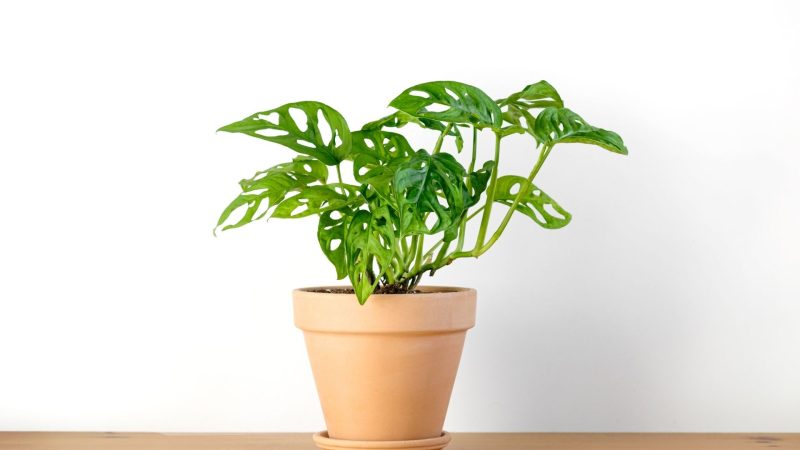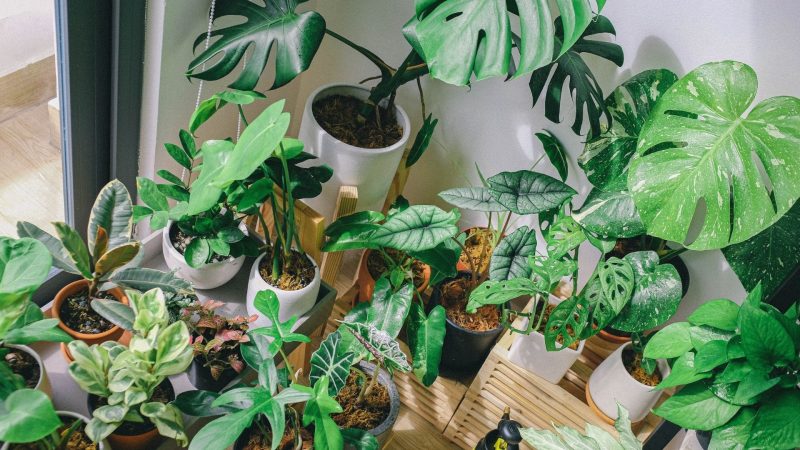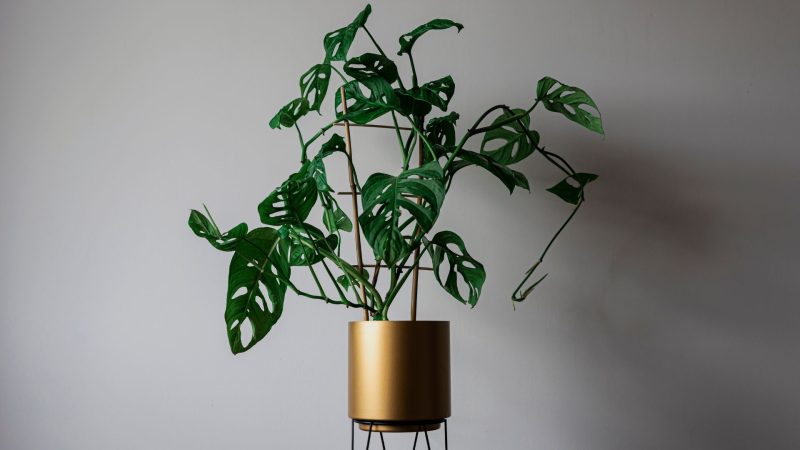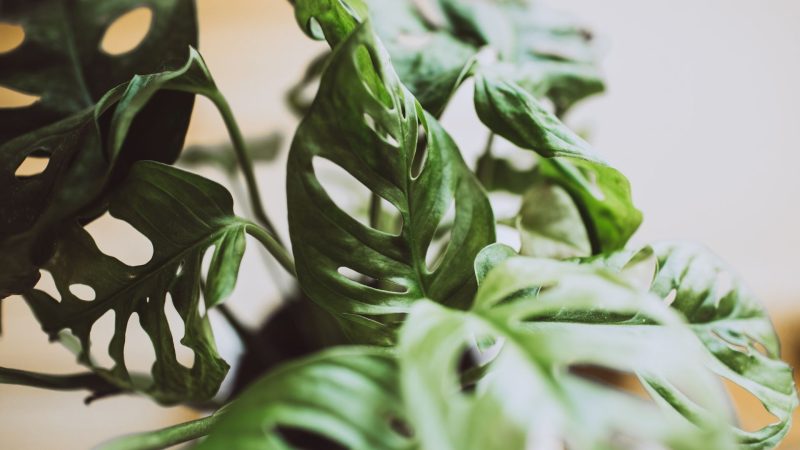If you want to spice up your urban jungle, putting striking Monstera plants is an excellent move. It renders a natural feel to your garden while making it modern and chic at the same time. The exquisite color and pattern of its leaves will give your space a pristine yet contemporary look. This is the reason why it is sought after by most plant enthusiasts.
One of the rarest and most elegant Monstera varieties is the Monstera obliqua plant. In order to maintain its exquisiteness and natural beauty, certain plant care strategies may be employed.
Here are the plant care strategies for the Monstera obliqua plant:
- Avoid direct sunlight.
- Mist the leaves constantly.
- Check the moisture level of the soil before watering the plant.
- Feed the plant according to a monthly and seasonal schedule.
- Do not prune the plant excessively but remove yellow, damaged, or wilted leaves.
- Re-pot the plant two days after it was last watered.
In this article, you will find its characteristics, the reason why it is rare and expensive, its difference from Monstera adansonii, and other important Monstera care tips.
What Is a Monstera Obliqua Plant?

A Monstera obliqua plant is a variety of the genus Monstera belonging to the family Araceae and order Alismatales. It originally came from Central and South America. Although, it has also reached other parts of the world due to its demand and popularity. Here are the characteristics of this elegant plant:
- This plant is considered a hemiepiphytic climber and has green leaves and lanceolate to broadly ovate in shape.
- Its matured foliage is popular for asymmetrical holes and gaps on each side of the midrib. These features add sophistication to its already beautiful leaves.
- It has green and cylindrical stems with a diameter of 2 to 10 millimeters and flowers attached above a spadix which is green to dark yellow in color.
- This plant also bears white fruits that appear like tiny berries, usually at 5 to 8 millimeters in diameter.
- It thrives in tropical environments and is regarded as an indoor and ornamental plant for purposes of landscaping.
Are Monstera Plants Rare?
Some Monstera plants are rare, while others are not entirely endangered. The reason for their rarity is that some of them are difficult to propagate. When its propagation becomes sluggish and arduous, there is a lesser chance of growing new plants belonging to the same variety. For this reason, it is making them somewhat rare. Another reason, some of them do not have much chlorophyll, which necessitates more exposure to light. This will slow their growth and, as a consequence, will also minimize the cycle of propagation. Its ultimate result is that no new plants will be grown and developed pending their growth.
What Is the Rarest Monstera?
Out of the numerous varieties of Monstera plants, the following are the rarest types:
- The Monstera adansonii, also known as Swiss cheese plant/vine, or five holes plant, is famous for its big, heart-shaped foliage and irregular holes developed as time goes by.
- Monstera deliciosa, also called the Swiss cheese plant, has leaves larger in size than the Monstera adansonii.
- The Monstera obliqua, has large holes and gaps on the leaves, to the point that only small filaments hold them together.
- Monstera minima is also referred to as the mini Monstera due to its smaller size than the regular Monstera. However, it can reach at least 5 meters in height when planted in the wild.
- The Monstera karstenianum, which is also recognized as Monstera Peru, may look like pothos at first glance. However, it got the Monstera’s oval-shaped leaves and habit of climbing.
- Monstera dubia, also known as the Shingle plant, often grows in the wild as its leaves are usually seen enveloping tree trunks.
- The Monstera standleyana, which is also referred to as the Silver Monstera, is popular for its silver hues and attractive holes when its foliage matures.
Are Monstera Obliqua Endangered?
The Monstera obliqua may be rare but not entirely endangered. Its rarity is due to the fact that it has a very slow growth, making it difficult to propagate. It is not usually seen in nurseries or plant stores unless these establishments took the pain of cultivating and growing Monstera obliqua plants, despite their very slow growth and minimal chances of propagation.
As of 1977, it is said that it was seen in the wilderness only 17 times. However, the sightings of the Monstera obliqua plant in the wild reached at least 700 times as of the year 2019. The said number may sound a lot, but it can still be considered as rare.
How Many Types of Monstera Are There?

About 45 species of Monstera belong to the tribe Monstereae, subfamily Monsteroideae, family Araceae, and order Alismatales. The term Monstera was derived from the Latin word ‘monstrum,’ which means monstrous and abnormal, probably because of its large oval leaves and irregular holes in its foliage.
How Do I Know My Monstera?
When you see a plant with large, green leaves that are somewhat oval in shape and have pointed ends, you might instantly think that it is a Monstera. However, do not forget that there are more than 40 varieties of this plant. To distinguish one from the other, carefully look at the thickness and texture of the leaves. If the foliage has a smooth surface but is extremely thin, it is probably a Monstera obliqua. However, if the leaves are somewhat thick but have a rough texture, it may be a Monstera adansonii. Also, you can take note of their climbing habits. If the Monstera develops in a compact manner and the nodes become shorter, it may probably be a Monstera deliciosa.
What Is the Difference Between Monstera Adansonii and Monstera Obliqua?

The following are the key differences between Monstera adansonii and Monstera obliqua:
- Character of leaves: The leaves of Monstera adansonii are generally thick but have a rough texture, while those of the Monstera obliqua plants are paper-thin, but their surfaces are smooth.
- As to the character of holes: The holes of Monstera adansonii are smaller and lesser in number, while those of the Monstera obliqua are slightly bigger and greater in quantity.
- Character of edges: The edges of Monstera adansonii are somewhat straight, while those of the Monstera obliqua plants are a bit wavy.
- Rate of growth: The rate of growth of Monstera adansonii is faster than the Monstera obliqua, which has stunted and slow growth.
- Rarity: Monstera adansonii is less scarce than Monstera obliqua, as the latter is rarer.
- Stolon formation: Monstera adansonii do not instantly form stolons, while Monstera obliqua easily forms stolons.
- Price: Monstera adansonii is cheaper in price than Monstera obliqua, which is somewhat expensive.
How Often Should I Water Monstera Obliqua?
Monstera obliqua need not be watered frequently. To promote and maintain its optimum health, it is best watered at least once or twice a week, when the sun is out during summertime and at least once every two weeks, when it’s winter season and the temperature is freezing cold. Also, only apply water when the top of the soil turns dry and use lukewarm water as much as possible.
To determine if you have overwatered your Monstera obliqua, or if it is dehydrated, look at the character of the leaves. If it has yellow leaves, stunted growth, and collapsed stalks, you have probably overwatered it. However, if you sense that its leaves are turning yellowish to brownish and have started to produce a crippling appearance, it may be on the verge of dehydration.
How Do You Revive Monstera Obliqua?
If your Monstera obliqua is suffering from droopy and yellow to brown leaves, slow growth, saturated soil, leaf blight, presence of black spots on its foliage, foul odor especially on the soil, and a frequent leaf falls, it may be at the point of dying. To revive its health and vigor, just perform the following steps:
Step 1: Assess the degree of moisture and character of leaves to know if it is overwatered or dehydrated. If it is dehydrated and its soil surface is dry, add a sufficient amount of lukewarm water.
Step 2: If you discover a building-up of dust in the leaves, wipe them gently using soapy water. This is to enhance the process of photosynthesis and make them look shiny and brighter.
Step 3: Enhance the humidity of the leaves. This can be done by misting the leaves with a spray bottle filled with water, putting your plants in a tray of pebbles soaked in water, utilizing humidifier devices, and placing your plants close to the bathroom if there is adequate lighting.
Step 4: Check if it is exposed to adequate lighting. If you see burnt and wilting leaves, you might want to put them away from your window as they may be exposed to too much light. However, if it has stunted growth and split leaves, you might need to place them in an area where there is proper lighting as it may lack sun exposure.
Step 5: Do not place your Monstera plants in areas near air conditioning and heating devices. These units may provide extreme temperatures to plants that may be harmful and detrimental to them.
Step 6: Inspect the plant for the presence of pests. Your Monstera may already be infested with disease-causing insects such as spider mites, mealybugs, and scale insects, which can affect the health status of your plant and cause its wilting. To treat it, apply neem oil and wipe the leaves with soapy water.
Monstera Obliqua Care Tips

Here are some of the most essential Monstera obliqua care tips:
- Place your Monstera obliqua under adequate lighting, but do not overexpose them to the sun as it may burn the leaves.
- Water your plants if it has a decreased moisture level and avoid overwatering them.
- Increase the humidity level of the plant by misting the leaves regularly, using humidifiers, and placing the pots in a tray of pebbles filled with water.
- Use potting soil that is rich in nutrients.
- Feed your Monstera obliqua with fertilizers during the growing season, and use half-strength fertilizers from Spring to Autumn once a month. When it’s the dormant period during winter, feeding is not necessarily needed.
- Prune and trim away dead, damaged, and wilting leaves.
Can Monstera Obliqua Grow Underwater?
Monstera plants can survive underwater, but they will not achieve healthy and optimum growth. Water is not the ideal environment for these plants, as it needs to be potted in soils and exposed to adequate lighting. Thus, if you want to make your plants healthy and flourishing, do not grow them underwater.
How Do You Keep Monstera Plants Small?
If you want to keep your Monstera plants small, you will need to limit their exposure to the sun, trim away back stems, leaves, and roots, and avoid repotting them in soil. This will somewhat make the Monstera plants small as their growth is stunted.
Why Is Monstera Obliqua So Expensive?
Monstera obliqua is expensive because of its rarity in the wilderness and in urban places. It is rare because it is difficult to propagate, owing to the fact that it has the tendency to grow slowly. Not only that, it may be a struggle to take care of this plant because of the thin width of its leaves and the delicate characteristic of its parts. Thus, this plant required handling with extreme care, caution, and competence.
How Much Does a Monstera Obliqua Cost?
Due to its rare and exquisite character, a single cutting is said to cost 5 to 8,000 dollars. In some cases, a single stem with nodes can cost 200 dollars, while a potted plantlet may have a price of 7,000 dollars.
Also, a bidder offered a staggering 23,000 dollars in an auction just to take hold of this precious plant. This just proves how rare and costly is a Monstera obliqua plant.
Here is a video about the Monstera obliqua plant sold for a considerable amount:
Summary
Due to its delicate parts, elegant appearance, and rare character, Monstera obliqua plants have become one of the sought-after garden ornaments. You will need adequate lighting, a proper watering schedule, and periodical plant provisions to take care of them. In this way, you can propagate them effectively or sell them at higher prices.
List of Sources
Flora & Fauna Web: Monstera Obliqua. .
Pennisi, B. (2020). Growing Indoor Plants with Success. University of Georgia.
Gilman, E. (1999). Monstera Deliciosa. University of Florida.